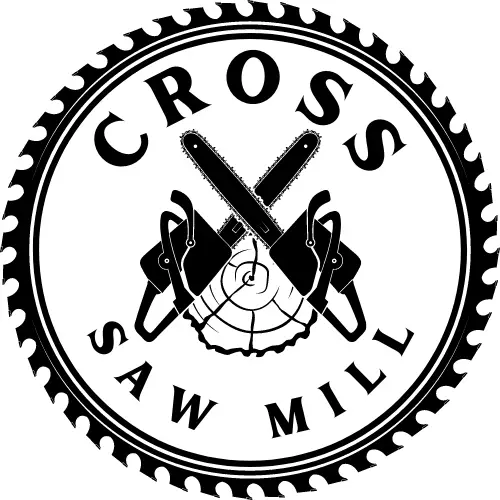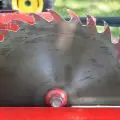It goes without saying that skilled and professional loggers don’t just utilize any chainsaw to complete their work. Instead, they intentionally choose the best chainsaw that is suited to the kind of massive projects they work on and has excellent levels of performance, power, durability, and productivity. These professional chainsaws are only for experts.
In this article, you’ll find out what chainsaws are used by professional loggers, the key features they possess, why they are suitable for loggers, and pro logger quotes from a forestry forum.
Table of Contents
- What Chainsaw Do Professional Loggers Use?
- How to Select the Perfect Professional Logger Chainsaw
- Quotes from Professional Loggers
- FAQs (Frequently Asked Questions)

What Chainsaw Do Professional Loggers Use?
Loggers who operate professionally utilize durable, high-performance gas chainsaws that can last all day. The logging chainsaw type they select has a strong and powerful engine, can be utilized in challenging settings, and is simple to clean and maintain.
These high-performance chainsaws are typically pro-grade chainsaws from the big boys within chainsaw manufacturing:
- Stihl
- Husquvarna (XP series)
They are often built to function flawlessly in the most demanding situations and give professional loggers the greatest experience possible while performing their everyday tasks.
Learn all about the various chainsaw manufacturers and where they are made in our Where Are Chainsaws Made? guide!
What Does a Professional Logger Chainsaw Look Like?
As a professional logger, it’s likely that you’ll use your equipment all year. Your cutting tool will be useful for a variety of jobs, such as commercial logging, forestry services, and tree care.
Technically, you’ll need to look for the best logging chainsaw with additional features and capabilities to withstand the range of challenging projects you’ll be working on.
Bar length is an important consideration when selecting a gas-powered chainsaw. A professional logging chainsaw should typically have a longer bar than a conventional saw, a robust crankshaft, and a more potent engine.
All of these characteristics make it possible to quickly cut and limb through larger, thicker trees and logs. The professional-grade saws differ from the other models in the following ways:
A Balanced Design
The balanced body design of a logger’s chainsaw is one of the key characteristics that distinguish it from other versions. Chainsaws used by many professional loggers have a long, thin body design. Directly behind the bar, their engine is mounted in an angled position.
Given that the saw will be operated for an extended period of time, its balanced design is essential. You will find it simpler to hold the tool uniformly thanks to this function, even after cutting for an extended amount of time.
The Top Handle
Top-handle types of logger chainsaws are typically used for business purposes. Since the chainsaws are smaller than the back-handle models, they are more comfortable to use. Top-handle chainsaws are fantastic options for cutting tree branches and tree limbs due to their lightweight design and handle location. Additionally, they work well when you need to cut at an angle downward.
Commercial Warranty
The majority of business chainsaws on the market come with a commercial warranty lasting one to two years. Given that they will be running for several hours each day, this is very amazing. Because power equipment consumers have such high expectations, these guarantees are not always readily available. Even when using the item in difficult circumstances, this warranty will give you peace of mind.
How to Select the Perfect Professional Logger Chainsaw
Professional or commercial-grade chainsaws are specially designed to perform well in the most trying circumstances. Gas-powered chainsaws are widely regarded as the industry standard for duties including logging, farming, clearing land, caring for and maintaining trees, and cutting large amounts of firewood.
Professional loggers typically choose chainsaws with engines that are at least 40cc and have guide bars that are at least 14 inches long. Before buying a commercial chainsaw, consider the following characteristics and traits that will help it resist normal wear and tear:
Heavy-Duty Chainsaws
You need a chainsaw that has a lot of power and is dependable for large activities like felling trees. If you’re seeking engines with higher horsepower and torque for reliable and enhanced production, professional-grade chainsaws are your best bet.
The engines of professional chainsaws are constructed with components that can survive extended periods of operation in order to channel and control all that power. These elements consist of:
- Heavy-duty crankshafts
- Heavier bearings
- Durable crankcases
Before you buy your professional logger chainsaw, consider the quality and longevity of the engine’s components in addition to the engine’s horsepower.
Engine Power
Engine power should be the first thing taken into account when buying a chainsaw. Since you’re purchasing a professional chainsaw, you should demand an engine with at least 40 CC and 1 HP. Chainsaws with larger engines have more power than those with smaller engines.
Loggers that need to cut down plenty of trees frequently utilize those chainsaws, which have engines ranging from 40 to 80 CC. When cutting a tree that is 30 to 40 inches in diameter, you won’t need to stop halfway through because of the power available.
Engine power (hp) and piston displacement (in cc) together make up the entire chainsaw power spectrum (horsepower, or HP). Simple piston displacement or engine size where the piston can move freely is measured in cubic centimeters. As a general rule, the saw’s engine power increases with increasing poison displacement.
In essence, the torque times the number of revolutions per minute determines power using the horsepower HP. Simply explained, the HP defines how quickly the tool can cut while the cc sets the length of the bar.
Ergonomic Design
You can be forced to suppose that most professional chainsaws weigh significantly more than the typical gas chainsaws used by yard owners because of their numerous strong engines and components. Sadly, this is not always the case. For instance, there is a good probability that you will work for long hours at a time if you are engaged in forestry, logging, or land escape operations.
In this situation, you’ll require a chainsaw that you can handle for extended periods of time without experiencing any discomfort. This is the exact reason that professional chainsaws are frequently constructed from sturdy, lightweight ergonomic materials. When choosing a chainsaw, go for one with the aforementioned high power-to-weight ratio and balanced construction.
Check to see whether the saw you prefer has a vibration reduction or dampening system for further comfort and safety. This frequently entails a number of shock-absorbing components both inside the saw’s body and on its handle, which lessens vibrations and prevents them from penetrating the user’s hand and wrist.
A perfectly balanced body, low vibration levels in the handles, and other correct ergonomic elements should always be sought after. For loggers, chainsaw kickback prevention is also crucial for all chainsaws. Always pay close attention to the little things because they matter a lot.
Maintenance Features
Professional chainsaws require routine maintenance due to their frequent use and tough environments. Because of this, manufacturers incorporate unique elements into the design of their professional-level saws so that they may be automatically tuned up while in use and maintain peak performance for a long time.
The air filter is one of the most crucial parts of a professional gas saw that needs to be serviced from time to time. Keep an eye out for a large surface air filter, as this will reduce the number of contaminants passing through. An air injection cleaning system is another good feature that will remove dust and debris.
Learn How to Clean a Chainsaw & Why It’s So Important in our guide!
A crucial step that helps maintain your chainsaw and keeps it cutting smoothly and precisely is oiling the bar and chain. Professional saws use adjustable bar and chain oil pumps instead of the automatic bar and chain oil mechanisms that are frequently built into the typical chainsaws for homeowners. You will be able to adjust the oil output in accordance with your working environment thanks to this.
Brand-Specific Features
Brand-specific features and some safety features are included with different professional saws. For instance, Husqvarna includes an AutoTune feature that detects changes in environmental factors like temperature, altitude, and humidity and automatically modifies the carburetor to optimize the engine’s performance.
Quotes from Professional Loggers
For the topic of “what chainsaws do lumberjacks use?”, I’ve pulled several quotes from this forestryforum:
Generally the Pro grade Stihls, Husquvarna (XP series), Johnserred (pretty much same as Huskys) with a smattering of Dolmars, Oleo Macs and a couple of others.
Pro Mac 610 is a 60cc saw, so something like a Stihl MS 362 or a Husky 357XP would be the current replacement.
Ian
I’m sure a lot of different makes are used, but Stihl and Husqvarna are really all I ever see. What part of the world are you in, and what size and sort of trees are you cutting. Guys here usually carry one saw with a 36″, MS660 or 395XP or an older version of either. And at least one back up saw with a 28″-36″ in the 372XP-395XP, or 460-660 range.
In the last ten years or so I’ve seen a lot of 385’s, 060’s, 372’s and lately a lot of 390’s. Get what feels best. Of all my saws, I use my 385xp, and my slightly smaller ms460 the most.
JHBC
Not much to add to what’s already been said in terms of brands & models. Going to the Stihl or Husqvarna website, they have their saws broken down into commercial vs. landowner or occasional use saws. I think one point is worth making…
Depending on the type of work done, and the type of tree’s harvested, different sized pro saws are selected. the big tree guys from the Pacific North West typically have the plus 80cc pro saws and pull longer bars. Around here there is a mix. A lot of the local “pro’s” run the 70cc-80cc class commercial grade saws, although the huge local logging company uses MS660’s.
For a guy who’s not taking down the plus 25inch tree’s, why carry the weight and spend the up front money of a Stihl MS660 with a 28 or 30inch bar when a MS460 with a 25 inch bar would easily handle anything a prospective buyer would ever cut?
AND the guys who do this for a living are going to be a bit stronger and in better shape…easier for those guys to hang on to 80cc of raw power..you get a little older and softer…bottom line you shouldn’t have pride influence a saw decision..they can create a terrible mess in a hurry if you slip or lose control and get in contact with the wrong stuff.
Weimedog
I ran McCulloch, Homelite, Lombard, Jonsered, Husqvarna and Stihl, I’m sorry but at the end of the day the Stihl proved to be the best saw.
Lumberjack48
FAQs (Frequently Asked Questions)
What chainsaw chains do professional loggers use?
Full chisel chainsaw chains are often only used by experts and knowledgeable chainsaw users. Because of their square-cornered cutting teeth, which are more suited to powering through wood, they are often used to cut through hardwood like oak.
What kind of chainsaw do professionals use?
Professional loggers use chainsaws that are lightweight but have significant amounts of power behind them. They also need to be ergonomic as the user will be operating them for a long time. The most common chainsaw brands professionals use are Stihl chainsaws and Husqvarna chainsaws, as they offer great pro-grade models.





